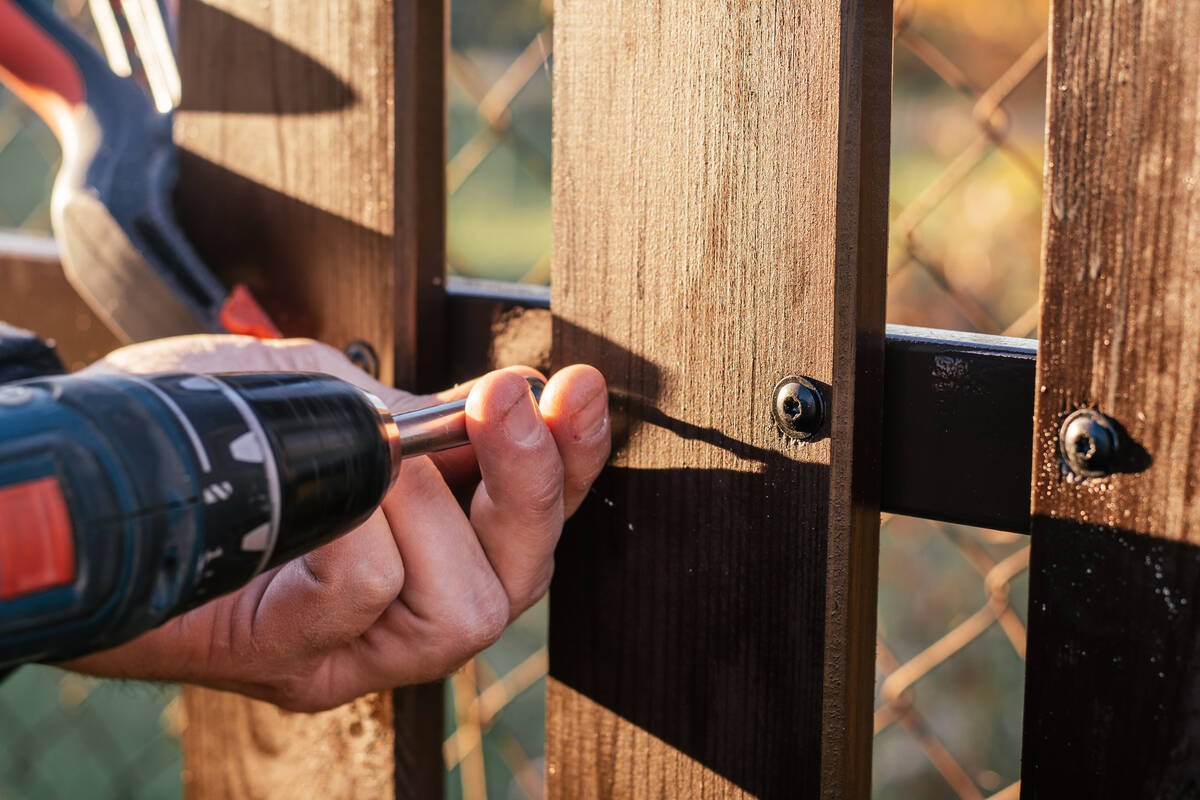Test fence’s strength before replacing it.
Q: I have a wooden fence that has seen better days. Its vertical posts are not so vertical anymore, and they wobble. Although the posts are in concrete, they move with the wind. To make matters worse, the gate is starting to sag more than the bags under my eyes. I can’t afford a block wall, and this fence needs some surgery. What should I do?
A: As you’ve learned, wood doesn’t last forever. I remember when my brother and I were little, we would vault over a wooden fence into our neighbor’s backyard to chase balls. Eventually, the fence started to lean. Well, we spent the rest of that summer replacing the fence, and from then on, we used the gate.
But it’s not just kids who can damage a fence. Mother Nature also has plenty of influence in that area. Moisture, heat and wind all play a role in the longevity of a fence.
Before deciding whether to repair the fence or replace it, test its strength. If most of the framework feels solid, I would repair it. If most of the posts are falling down, it’s probably best to rebuild.
The gate is usually the first to go. It will loosen from the post and drag on the ground. Even the post it’s attached to will separate from the fence. If the hinges are loose from the post, replace the old screws with longer ones to make sure they bite into good wood. If the post has separated from the fence, use L brackets to reattach them.
If the gate sags because it is out of square, buy a turnbuckle (no, not the kind you see on wrestling) for about $10. Raise the sagging side of the gate to its normal height using some scraps of wood. Make sure the latch is aligned with the opening and attach the turnbuckle diagonally using lag bolts.
One end of the turnbuckle should be attached at the top of the hinged side, while the other end gets attached to the bottom of the latch side. Tighten the turnbuckle until the gate is square and then remove the scraps.
After you repair the gate, you will have to reattach the pickets to the cross boards with galvanized screws.
Vertical posts in concrete that are wobbly may be repairable. If the concrete is solid but the post still moves, try hitting some wooden shims in any gaps between the post and the concrete. Cut off any of the shims that stick up above the concrete, then fill any gaps with silicone caulk.
If the concrete and the post are wobbly, it is likely that only a thin collar of concrete was poured around the post, leaving the bottom of it to rot and swim in the moist ground. In this case, replace the post.
To do this, pull the nails that hold the sections of fence to the posts. Then, move the sections of fence away from the post by a foot or two. Rest the fence sections on some scrap wood to keep them at their normal height. Nail a block of wood near the bottom of the post you are going to remove.
Stack some scrap blocks on the ground about a foot away from the post. Place the end of a two-by-four underneath the block of wood that you nailed to the post and use the pile of scrap blocks as the fulcrum for your newly created lever. Push down on the two-by-four and watch the post rise out of the ground like spring daisies.
Depending on the weight of the post, you may need a helper to keep the post from falling back into the hole.
After the post is out of the hole, dig the hole down to a depth of at least 18 inches. Insert your new pressure-treated post into the hole and move the sections of fence back to the post.
Nail the fence back on the post making sure that the post is plumb and the sections of fence are level. Brace the post with some two-by-fours staked in the ground to keep it plumb.
Fill the hole with concrete, and trowel the top of the concrete at a slope so that water will run off instead of puddling on the new wood.
Because the color of the new wood won’t match the old, you can stain the fence to help the pieces blend together and also add a little protection against the elements. That is, all elements except the neighborhood kids.
Mike Klimek is a licensed contractor and owner of Las Vegas Handyman. Questions may be sent by email to handymanoflasvegas@msn.com. Or, mail to 4710 W. Dewey Drive, No. 100, Las Vegas, NV 89118. His web address is www.handymanoflasvegas.com.
Do-it-yourself
Project: Wood fence repair
Cost: From around $75
Time: From three hours
Difficulty: ★★★★



















